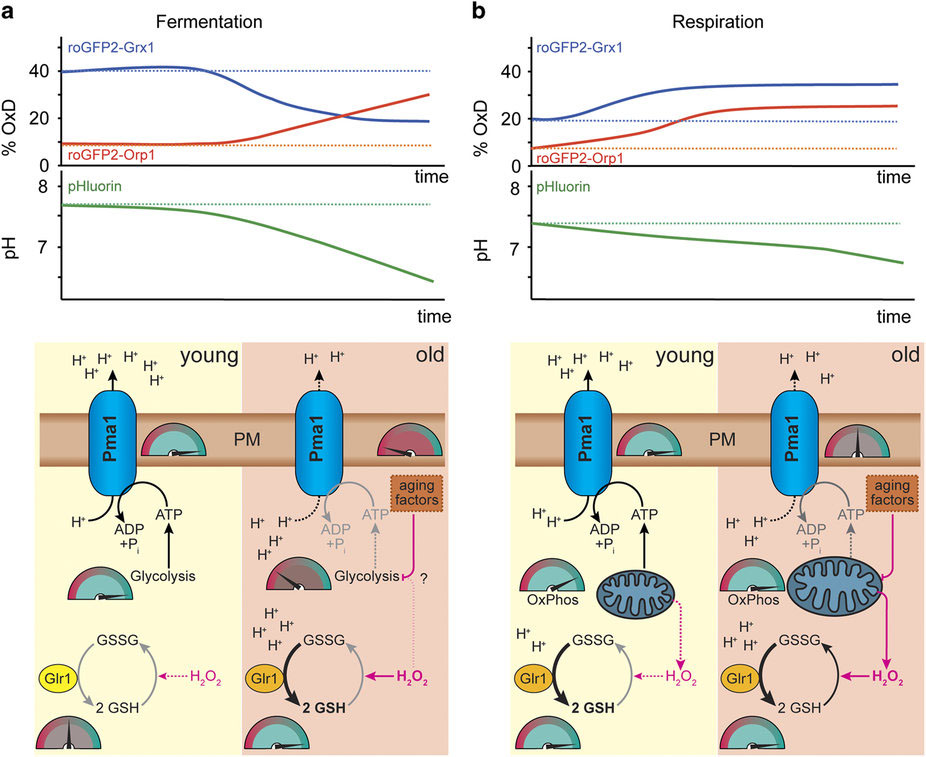酵母の細胞質グルタチオン酸化還元系の酸化状態は複製的寿命と相関しない
The oxidation state of the cytoplasmic glutathione redox system does not correlate with replicative lifespan in yeast
2016年12月15日 npj Aging 2, Article number:16028 (2016) doi:10.1038/npjamd.2016.28

活性酸素種の蓄積を加齢の主因とする説がある。さらに酵母では、液胞および細胞質ゾルのpH上昇が複製的加齢の一因であることが示唆され、それは加齢する幹細胞のモデルになると考えられている。今回我々は、遺伝子にコードされた蛍光プローブおよび新開発のフローサイトメトリーに基づく加齢アッセイを利用して、加齢する酵母の細胞質ゾルのpH、H2O2レベル、およびグルタチオン酸化還元緩衝系がどのように変化するかを調べた。その結果、複製的寿命の終末にはpHが低下してH2O2が増加することがわかったが、意外にも、発酵を行う高齢酵母細胞ではグルタチオン酸化還元電位がグルタチオン還元酵素Glr1依存的に還元性を増した。Glr1を欠失させると細胞質ゾルが高度に酸化された状態になるが、液体培養での複製的寿命には影響が認められない。むしろ、寿命の終末はエネルギー代謝の崩壊が特徴と考えられる。
Accumulating reactive oxygen species were proposed as leading cause of aging. Moreover, increasing pH in vacuole and cytosol was suggested to contribute to replicative aging in yeast, considered to be a model for aging stem cells. Here we investigated how cytosolic pH, H2O2 levels, and the glutathione redox buffer change in aging yeast, using genetically encoded fluorescent probes and a newly developed flow-cytometry based aging assay. We found that pH decreases and H2O2 increases at the end of the replicative lifespan; but, surprisingly, the glutathione redox potential became more reducing in fermenting aged yeast cells in a glutareductase Glr1 dependent manner. Glr1 deletion leads to a highly oxidized cytosol but does not influence the replicative lifespan in liquid culture. Instead the end of lifespan seems to be marked by a break down of energy metabolism.

